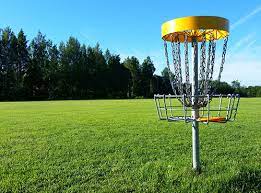In the exhilarating world of disc golf, where precision, technique, and strategy collide, understanding the science behind disc flight is essential. Whether you’re a seasoned player looking to refine your skills or a newcomer eager to learn the ropes, this comprehensive guide will delve deep into the intricacies of disc flight, equipping you with the knowledge you need to soar to new heights in the game.
JoyGamez is the best blog to read all about disc golfing.
The Disc Golf Revolution
Disc golf, also known as Frisbee golf, has witnessed a surge in popularity over the past decade. This exciting sport combines elements of traditional golf with the casual, freewheeling spirit of throwing a frisbee. Players aim to complete a course in as few throws as possible, targeting a pole hole rather than a traditional golf hole. The allure of disc golf lies not only in its accessibility but also in its profound reliance on the science of disc flight.
Read Also About Best Disc Golf Putter
Understanding Disc Anatomy
Before we unravel the science behind disc flight, it’s crucial to familiarize ourselves with the fundamental components of a disc. A disc golf disc typically consists of three primary parts:
1. Rim
The outer edge of the disc, known as the rim, plays a pivotal role in controlling the disc’s flight path. Discs with wider rims tend to be more stable and are favored for powerful throws. Narrow-rimmed discs, on the other hand, are often used for finesse shots that require precision.
2. Flight Plate
The flat, central portion of the disc is referred to as the flight plate. It provides lift and stability during flight. The shape and curvature of the flight plate significantly influence how the disc moves through the air.
3. Underbelly
The bottom of the disc, or the underbelly, impacts the disc’s glide and its ability to maintain altitude. Different underbelly designs contribute to variations in the disc’s performance.
Read About Best Disc Golf Carts
The Four Forces of Disc Flight
To truly grasp the science of disc flight, we must explore the four primary forces that act on a disc during its flight:
1. Lift
Lift is the upward force that keeps a disc in the air. It is generated by the pressure difference between the top and bottom surfaces of the disc. The shape of the flight plate and the angle of release are critical factors in determining lift.
2. Weight
The weight of a disc influences its stability and how it responds to external forces. Heavier discs are generally more stable, while lighter discs can be more affected by wind and other factors.
3. Drag
Drag is the air resistance that opposes a disc’s forward motion. Understanding drag is vital for controlling the distance and accuracy of your throws. Smoother edges and clean releases can minimize drag and maximize distance.
4. Gyroscopic Precession
Gyroscopic precession is a phenomenon that occurs when a spinning disc experiences a force perpendicular to its axis of rotation. This force is responsible for the disc’s stability and the predictability of its flight path.
Read About Best Disc Golf Baskets
The Importance of Spin
Spin is the secret sauce in disc golf. When you throw a disc with the right amount of spin, it becomes a stable and predictable flying machine. Spin creates gyroscopic stability, which helps the disc maintain a straight and true flight path. It also counteracts the forces of lift and drag, allowing for greater control and distance.
Mastering Disc Flight
Now that we’ve dissected the key elements of disc flight, let’s talk about how to apply this knowledge on the disc golf course:
1. Disc Selection
Choose your disc wisely based on your skill level and the specific shot you need to execute. Remember, different discs have distinct flight characteristics.
2. Throwing Technique
Work on your throwing technique to achieve the right balance of power and accuracy. Practice proper grip, stance, and follow-through to maximize your throws.
3. Wind Considerations
Factor in wind conditions when planning your shots. Wind can drastically affect the flight of your disc, so adjust your angle and power accordingly.
4. Course Management
Approach each hole strategically. Consider the layout of the course, obstacles in your path, and the optimal throwing lines to minimize your throws.
Best Disc Golf Distance Drivers
The Role of Disc Types
Disc golf offers a diverse range of discs, each tailored for specific purposes. Understanding the various types is crucial for optimizing your gameplay:
1. Drivers
Drivers are designed for long-distance throws. They have a sharper edge and typically exhibit more stability. Variations within this category cater to different arm speeds and throwing techniques.
2. Midranges
Midrange discs offer a balance between distance and control. They are ideal for precision shots and navigating tight fairways. A well-thrown midrange disc can save strokes by landing you closer to the basket.
3. Putters
Putters are the slowest and most controllable discs. They are used for short-range shots, including putting into the basket. Putters have a rounded edge, ensuring a gentle landing.
Hyzer vs. Anhyzer Throws
In the world of disc golf, the angle at which you release the disc plays a pivotal role in its flight path. Understanding the concepts of hyzer and anhyzer throws can greatly enhance your game:
1. Hyzer
A hyzer throw involves releasing the disc with its outer edge tilted downward. This results in a left-to-right flight path for right-handed players (and vice versa for left-handed players). Hyzer throws are great for navigating around obstacles and achieving controlled fades.
2. Anhyzer
Conversely, an anhyzer throw entails releasing the disc with its outer edge tilted upward. This imparts a right-to-left flight path for right-handed players (and vice versa for left-handed players). Anhyzer throws are useful for achieving a curve or “S” flight, allowing you to navigate tight fairways and obstacles.
Disc Flight Variations
While the science behind disc flight provides a foundational understanding, it’s essential to recognize that discs can exhibit unique flight patterns even within the same category. Factors such as disc wear, plastic type, and individual throwing styles can lead to variations in flight. Experimenting with different discs and developing a feel for their nuances is key to becoming a skilled disc golfer.
Disc Golf as a Mind Game
Disc golf isn’t just a physical sport; it’s a mental challenge as well. The ability to read the course, adapt to changing conditions, and maintain focus throughout a round can make all the difference. Developing a strategic mindset and honing your mental game can elevate your performance on the course, allowing you to make the most of your understanding of disc flight.
Conclusion
In the world of disc golf, mastering the science of disc flight is the key to success. Understanding the interplay of lift, weight, drag, and gyroscopic precession, along with the importance of spin, empowers you to navigate the course with finesse and precision. Whether you’re a novice or a seasoned pro, this knowledge will undoubtedly help you reach new heights in your disc golf journey.





